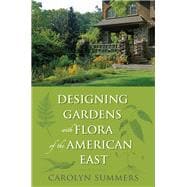
Note: Supplemental materials are not guaranteed with Rental or Used book purchases.
Purchase Benefits
What is included with this book?
| Preface | p. ix |
| Acknowledgments | p. xiii |
| List of Abbreviations | p. xv |
| Why Should We Garden with Indigenous Plants? | p. 1 |
| Wildlife in Field, Forest, and Garden | p. 13 |
| Hosting Butterflies | |
| Hosting Bees and Moths | |
| Bringing Up Birds | |
| The Aquatic Food Web | |
| Practicing Science in the Garden | |
| Maintaining Wildlife in Your Garden | |
| Uninvited Guests | |
| The Wild Flora Sanctuary | |
| "Safe Sex" in the Garden | p. 39 |
| Understanding Scientific Names | |
| Reproductive Processes in Plants | |
| Cultivated Plant Varieties | |
| Choosing between Cultivars and Open-Pollinated Indigenous Plants | |
| Choosing between Different Types of Hybrid Cultivars | |
| Choosing between Indigenous and Nonindigenous Plants | |
| Principles of "Safe Sex" in the Garden | |
| Maintenance: Preventing Reproduction in Nonindigenous Plants | |
| Showy substitutes for Common Invasive Plants | p. 59 |
| Trees | |
| Shrubs | |
| Vines | |
| Groundcovers | |
| Perennials and Grasses | |
| Invasive Nonindigenous Plants You Won't Find in a Nursery | |
| Designing Traditional Gardens with Indigenous Plants | p. 95 |
| Americans Abroad | |
| Americans at Home | |
| Basic Design Considerations | |
| Elements of Style | |
| Functional Design | |
| Designs Drawn from Indigenous Plant Communities | p. 128 |
| Habitats or Plant Communities | |
| Forest Fragments and Woodland Edge | |
| Successional Plant Communities | |
| Freshwater Streams, Ponds, and Other Wetlands | |
| The Seashore | |
| Shopping for Indigenous Trees, Shrubs, and Perennials | p. 164 |
| Find Trusted Sources of Information | |
| Visiting Nurseries | |
| Deciding Haw Many Plants to Buy | |
| Fruiting Plants | |
| Afterword | p. 177 |
| Appendixes | |
| Circumboreal Plants | p. 179 |
| Nectar Plants That Serve as Hosts | p. 180 |
| Berries for Birds | p. 181 |
| Dioecious Plants | p. 182 |
| Invasive Nonindigenous Plants to Avoid | p. 183 |
| Indigenous Heirlooms | p. 185 |
| Indigenous Plants Suited for Japanese and Chinese Designs | p. 190 |
| Indigenous Plants Suited for Formal Gardens | p. 192 |
| Street Trees | p. 194 |
| Fragrant and Aromatic Plants | p. 196 |
| Indigenous Annuals and Biennials | p. 199 |
| Suggested Sources of Indigenous Plants | p. 200 |
| Indigenous Plants Commonly Sold in Nurseries | p. 202 |
| Bibliography | p. 205 |
| Index | p. 211 |
| Table of Contents provided by Ingram. All Rights Reserved. |
The New copy of this book will include any supplemental materials advertised. Please check the title of the book to determine if it should include any access cards, study guides, lab manuals, CDs, etc.
The Used, Rental and eBook copies of this book are not guaranteed to include any supplemental materials. Typically, only the book itself is included. This is true even if the title states it includes any access cards, study guides, lab manuals, CDs, etc.